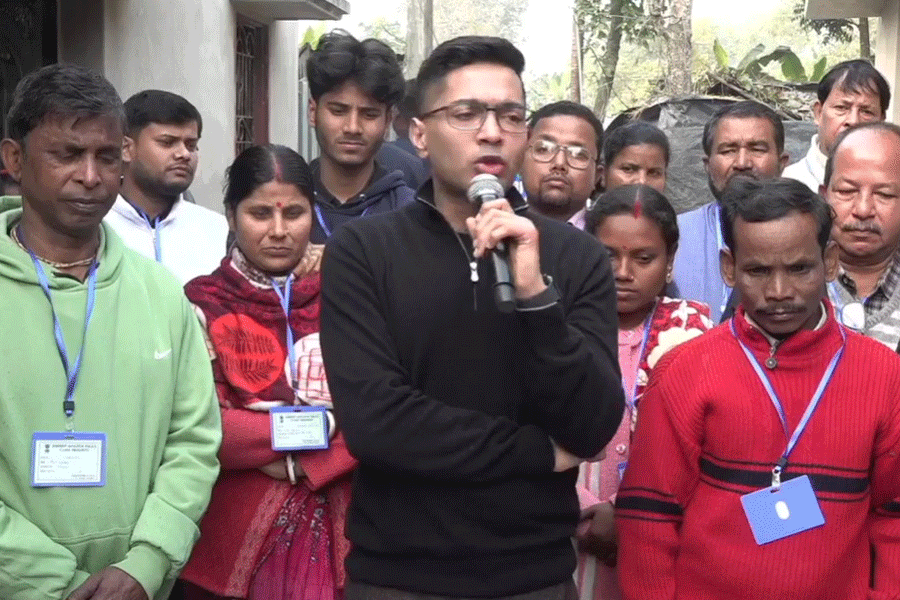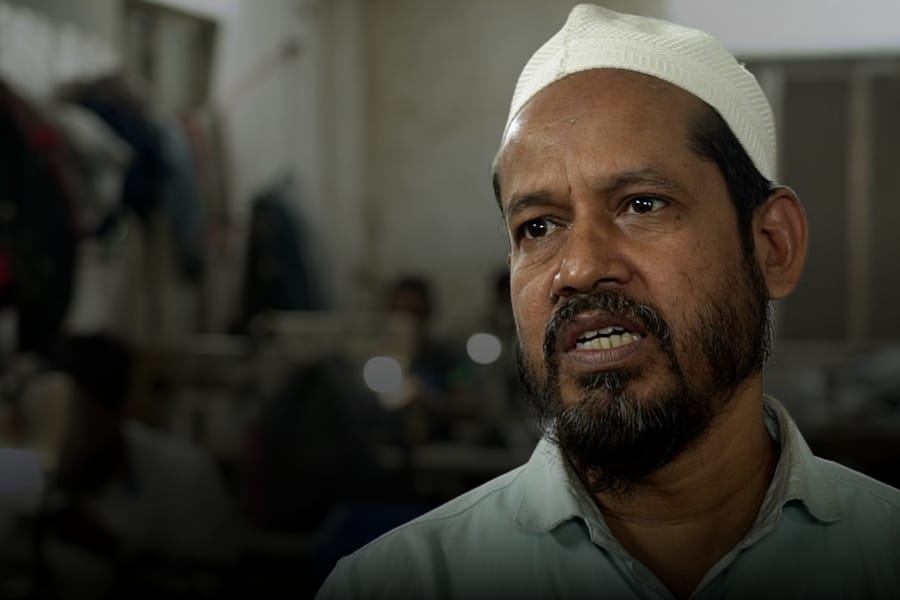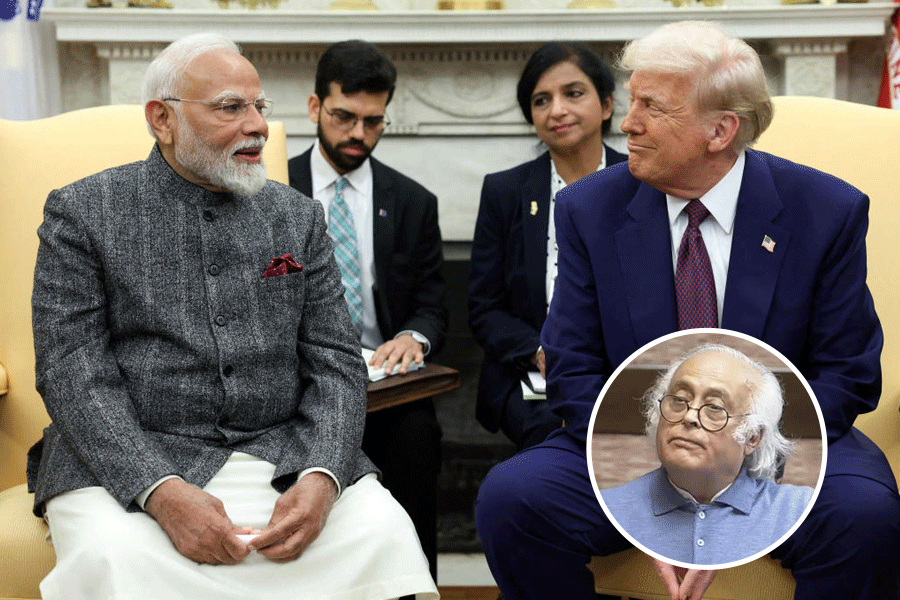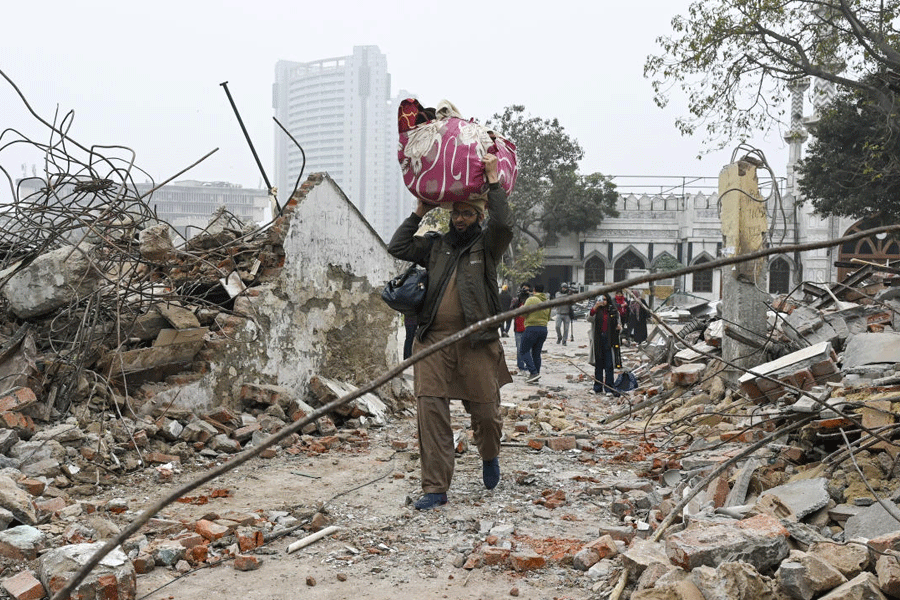|
|
A n unruffled air surrounds the hundreds of carelessly strewn boulders, stones and pebbles that constitute the Mama-Bhagne Pahar on the outskirts of Dubrajpur. If some influential people of Dubrajpur have got together, collected funds, and constructed a children’s park in the area, it is perhaps because these rocks in their natural state are no longer attractive enough for youngsters, or fit for ‘family’ outings. Cordoning off a portion of the Mama-Bhagne Pahar and imposing an entry fee on those who wish to picnic or play have helped genteel citizens stay away from the declarations of undying love painted or etched on the rock faces.
The factors behind the creation of this landscape are many. It could have been the result of the efforts of the redoubtable Ram, who, having decided to wage war against Ravana, found that he could not get his troops to the other side of the waters. He took up his chariot and swiftly reached the Himalayas to pick up some stones with which a bridge could be built for his men. As he was gliding over Birbhum, his horses, quite understandably, started with fright. The chariot overturned, splattering the landscape with some of the rocks Ram was carrying.
Or Mama-Bhagne could have been the handiwork of the temperamental Shiva, who, on discovering that his consort, Sati, had immolated herself, did what he does best. Notorious for performing the tandava at the drop of a hat, Shiva went on a rampage with Sati on his shoulders. His movements not only fragmented and scattered Sati’s charred body, but also the land, breaking it up into the rocks that now constitute the Mama-Bhagne Pahar. A hot spring appeared on the spot where Sati’s yoni fell. A constant trickle marks the place to this day, signifying her fertility.
Or it could have been a plain boring volcanic eruption millions of years ago that led to the formation of these oddly-balanced blocks of lava, which got solidified into granite. The lovestruck Romeos and Juliets who immortalized their names on the rock face have something to be proud of since not even time and wind erosion have managed to deface these rocks, as these couples have done.
The arrangement of the boulders is surprising. The pair of rocks, which lend their name to this entire region, are famously called Mama-Bhagne or Uncle- and-Nephew. From a distance, it seems that the towering bhagne is leaning on his short and fat mama. But it is another small rock — minuscule compared to the two boulders overshadowing it — that is perhaps responsible for the startling manner in which Mama and Bhagne are balanced. This small rock, being less high and mighty than its neighbours, has been relegated to oblivion.
But if it were left to Satyajit Ray to interpret the huge rock of Bhagne atop the smaller Mama, he would talk of how one’s sins come home to roost. Years of neglect, as far as infrastructural facilities are concerned, have made Dubrajpur one of the most poorly connected towns in Birbhum. Only a few trains stop at the railway station. Since Suri Sadar, only 18 kilometres away, is an important stop, Dubrajpur is deprived of regular rail services. Gaps of five to six hours between trains make travelling difficult, even for those who commute within the district.
Medical emergencies pose the biggest problem since the nearest functional hospital is at Suri. Even those who can afford to travel to Calcutta for treatment find themselves at a disadvantage, thanks to the infrequent trains. To Ray, the Mama-Bhagne stood for the burden of sins that one carries on one’s shoulder. But it seems that the region around these hillocks has suffered down the years for no fault of its own.













